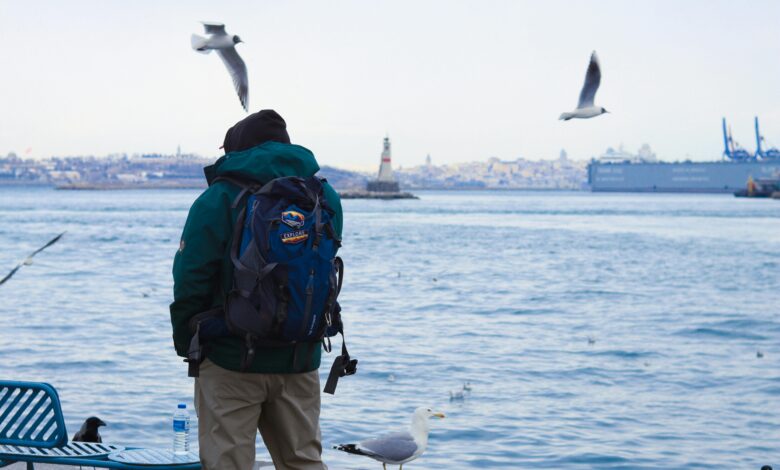Travel Insurance for Adventure Sports in Canada

Canada is a paradise for adventure enthusiasts, offering breathtaking landscapes and thrilling activities like skiing, snowboarding, rock climbing, whitewater rafting, zip-lining, and more. However, engaging in these high-energy pursuits comes with inherent risks that standard travel insurance policies may not fully cover. This is where travel insurance for adventure sports becomes essential.
In this article, we’ll explore why travel insurance is crucial for adventure sports in Canada, the specific risks involved, the types of coverage available, and tips for choosing the right policy to ensure your adventures are both exhilarating and safe.
Why Is Travel Insurance Important for Adventure Sports?
Adventure sports often involve activities that carry higher-than-average risks, such as injuries, equipment damage, or unexpected cancellations. While Canada boasts world-class facilities and safety standards, accidents can still happen—whether you’re scaling cliffs in Banff National Park or kayaking through the rapids of the Ottawa River.
Here’s why travel insurance tailored for adventure sports is vital:
- Medical Emergencies Injuries sustained during adventure sports can range from minor sprains to severe fractures or concussions. Medical treatment in Canada can be expensive, especially if you require emergency evacuation or hospitalization.
- Trip Cancellations or Interruptions Weather conditions, injuries, or other unforeseen events might force you to cancel or cut short your trip. Without proper coverage, you could lose significant amounts of money spent on flights, accommodations, and activity bookings.
- Equipment Loss or Damage High-performance gear used in adventure sports—such as skis, climbing harnesses, or scuba diving equipment—is often costly. If lost, stolen, or damaged, replacing it out-of-pocket can be financially burdensome.
- Search and Rescue Costs Some remote adventure locations in Canada may necessitate search and rescue operations in case of emergencies. These services can incur hefty fees, which travel insurance can help mitigate.
- Liability Protection Accidents involving others during group activities (e.g., guiding a hiking expedition) could lead to liability claims. Insurance can protect you against potential legal costs.
Common Risks Associated with Adventure Sports in Canada
Each adventure sport has its own set of risks, influenced by factors such as terrain, weather, skill level, and location. Below are some examples of common risks faced by adventurers in Canada:
1. Winter Sports (Skiing, Snowboarding, Ice Climbing)
- Avalanches
- Hypothermia or frostbite
- Broken bones or head injuries from falls
- Equipment malfunctions
2. Water-Based Activities (Whitewater Rafting, Kayaking, Scuba Diving)
- Drowning or near-drowning incidents
- Capsizing or collisions
- Decompression sickness (for divers)
- Equipment loss in fast-moving waters
3. Mountain Adventures (Rock Climbing, Mountaineering, Hiking)
- Falls or slips leading to serious injuries
- Altitude sickness
- Wildlife encounters
- Getting lost or stranded
4. Aerial Activities (Paragliding, Skydiving, Zip-Lining)
- Equipment failure
- Collisions with obstacles
- Emergency landings in remote areas
Types of Travel Insurance Coverage for Adventure Sports
Not all travel insurance policies are created equal, especially when it comes to covering high-risk activities. Here are the key types of coverage to look for when planning an adventure-filled trip to Canada:
1. Medical Coverage
- Covers emergency medical expenses, including hospital stays, surgeries, and ambulance services.
- Includes provisions for emergency medical evacuation, which is critical in remote areas like Yukon or Nunavut.
2. Accidental Death and Dismemberment (AD&D)
- Provides compensation in the event of accidental death or permanent disability caused by an adventure sport-related incident.
3. Trip Cancellation/Interruption Insurance
- Reimburses non-refundable costs if you need to cancel or interrupt your trip due to injury, illness, or other covered reasons.
4. Personal Belongings and Equipment Coverage
- Protects against theft, loss, or damage to personal items and specialized sports equipment.
5. Search and Rescue Coverage
- Covers the cost of search and rescue missions if you become stranded or injured in hard-to-reach locations.
6. Liability Insurance
- Shields you from financial responsibility if you accidentally cause harm to another person or property while participating in an adventure activity.
7. Activity-Specific Coverage
- Some insurers offer add-ons specifically designed for certain sports, such as skiing, scuba diving, or mountaineering. These endorsements ensure that your chosen activity is explicitly covered under your policy.
Factors to Consider When Choosing a Policy
Selecting the right travel insurance policy for adventure sports requires careful consideration of several factors:
1. List of Covered Activities
Ensure the policy explicitly mentions the activities you plan to participate in. For example, if you intend to go heli-skiing or bungee jumping, verify that these are included.
2. Coverage Limits
Check the maximum payout limits for medical expenses, trip cancellations, and equipment replacement. Make sure they align with your needs and the potential costs associated with your planned activities.
3. Exclusions
Review the fine print to understand what isn’t covered. Many policies exclude extreme sports unless you purchase additional endorsements.
4. Duration of Coverage
Decide whether you need single-trip coverage or multi-trip annual coverage if you frequently engage in adventure sports.
5. Provider Reputation
Choose a reputable insurer with experience in covering adventure sports. Look for customer reviews and ratings to gauge reliability.
6. Cost vs. Value
Compare premiums across different providers, but prioritize value over price. A slightly higher premium may offer significantly better protection.
Tips for Maximizing Your Travel Insurance Benefits
To get the most out of your travel insurance policy, follow these practical tips:
- Disclose All Planned Activities Be transparent about the activities you intend to pursue when purchasing your policy. Failing to disclose high-risk sports could result in denied claims.
- Read the Fine Print Pay close attention to exclusions, limitations, and requirements (e.g., wearing approved safety gear). Ignoring these details could invalidate your claim.
- Keep Documentation Save receipts for prepaid expenses, maintain copies of your itinerary, and document any incidents thoroughly. This will streamline the claims process.
- Pack Smart Avoid carrying unnecessary valuables, and use secure storage options for your belongings and equipment at lodges or campsites.
- Stay Within Your Skill Level Participate in activities suited to your experience and fitness level. Pushing beyond your capabilities increases the likelihood of accidents.
- Carry Proof of Insurance Keep a digital and physical copy of your policy handy, along with the insurer’s contact information, in case of emergencies.
Real-Life Scenarios: The Importance of Adventure Travel Insurance
Let’s examine two hypothetical situations to highlight the importance of having adequate travel insurance for adventure sports in Canada:
Scenario 1: Skiing Accident
Emma, an avid skier, traveled to Whistler Blackcomb Resort in British Columbia. During her second day on the slopes, she took a tumble and fractured her leg. Thanks to her comprehensive travel insurance policy, her $10,000 medical bill—including helicopter evacuation and hospital treatment—was fully covered. Without insurance, Emma would have faced significant out-of-pocket expenses.
Scenario 2: Lost Gear
James went whitewater rafting in Alberta’s Kananaskis Country. Midway through his excursion, his paddleboard floated away and was irretrievable. His travel insurance policy reimbursed him for the $800 cost of replacing the board, allowing him to continue enjoying his vacation without stress.


